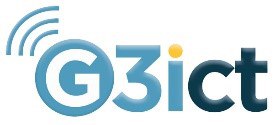25th Anniversary of the ADA Series: Expanding Corporate Culture to Include Persons with Disabilities in your Workforce
Posted on May 13, 2015

CEO and Founder, Ruh Global IMPACT and Chair, G3ict Employability and Technology Group
In the third part of G3ict's Special Series Celebrating the 25th Anniversary of the ADA, Debra Ruh explores ways in which an organization can positively influence their reputation in the community by including persons with disabilities in their customer base as well as their workforce.
Culture and values are a set of beliefs that a firm encourages the leaders and team members at all levels of the organization to uphold. Each organization has values that determine their beliefs, mission and the very foundation of the firm. Company culture also positively influences every area of the business enterprise and is therefore, essential to the overall success of your company. They are fundamental beliefs of the organization and also an intangible measurement of the firm’s assets.
A firm must have a clear mission and purpose along with inculcating respect and pride among its employees. It is also critical that values be socialized, constantly reinforced, and embedded into the very fabric of the organization’s way of thinking and decision-making. Thus, Corporate Social Responsibility and community support are values that are important to both employees and customers.

Image: “Our vision is to create innovative technology that is accessible to everyone and that adapts to each person's needs. Accessible technology eliminates barriers for people with disabilities and it enables individuals to take full advantage of their capabilities." - Bill Gates, Chairman, Microsoft Corporation.
Action Plan to Determine Gaps
Here are some ideas to close the gap towards inclusion between current and desired state at the organization level. A good place to start is by creating a roadmap.
1. Bridge the knowledge gap. Determine your risks by understanding the laws and standards that apply to your business. Determine the nature and extent of your firm’s legal obligations and supplement it with actionable steps to comply with standards and legislation.
2. Facilitate modeling. Join business-to-business (B2B) conversations to learn successful practices from other businesses and then modify your plan to adopt relevant practices.
3. Receive usable information from official sources. Receive information from official sources that is coherent and consistent. Enter strategic alliances with federal agencies and programs that the government has funded to help employers be successful.
4. Create a safe environment. Find business resources that allow you to inquire, comment, and/or try new approaches without the fear of any adverse consequences (litigation, brand damage, bad press, or loss of proprietary information).
5. Secure meaningful data. Find resources that provide relevant data to help make the business case and plan of action, including resources that will provide B2B education and technical assistance, best practices, case studies, and business models.
6. Form partnerships with Disabled Persons Organizations (DPOs). DPOs in every state have expertise in specific policy, procurement and technology matters, along with extensive network and outreach abilities. They work directly with persons with disabilities and related stakeholders, so collaborating with them can help your firm reach set of people that you want to build relationships with.

Image: Leadership at the highest level of the business is critical to secure “buy-in” and establish and sustain a corporate-wide culture.
Next Steps: Implementation
1. Leadership buy-in: Leadership at the highest level of the business is critical to secure “buy-in” and establish and sustain a corporate-wide culture (not limited to human resources) that will increase awareness, create expectations, and enhance commitment to the hiring, accommodation, retention, and advancement of persons with disabilities.
2. Corporate commitment: The outcome of successful leadership will be that the corporate commitment is pervasive and last much longer than the terms of office of one or two “leaders” that currently supports its commitment.
3. Framing the issue: Make the Business Case by framing the issue in terms of return on investment, direct and indirect benefits to company and all employees in general; do not frame only in terms of “persons with disabilities” or in terms of “compliance.”
4. Develop a talent management strategy: Shortage/shrinkage of talent pool (e.g., retirement of baby boomers, trends) is a significant threat to business success. Persons with disabilities are an untapped labor pool and have as much to contribute as the next professional.
5. Recognize changing demographics of the workforce: More people will be working with a disability/functional impairment e.g., aging/mature population, increased survival rate of premature infants, changing expectations.
6. Improve productivity and reduce costs: Improved employee productivity and reduced costs results from efforts to make workplace technologies easier to use and more accessible for all, including employees with disabilities, more mature workers experiencing functional limitations, non-English speaking language users, and technology-savvy younger workers who will be “turned on” to added functions.
7. Enhance retention (adopting turnover prevention strategies). It costs less to accommodate/provide accessible technology for employees who become injured on the job or experience increased limitations as they age than to pay short and long-term disability payouts and/or lose them and require retraining.
Other benefits include:
a. More expensive to lose existing employees (costs to replace lost employees) b. Separation costs c. Search costs d. Up-front hiring costs e. New employee services f. Lost organizational knowledge g. Lost productivity
The great news is that employers are not just waking up to the value of including persons with disabilities in their workforce; they are actively encouraging it and championing it. It is almost time to welcome the 25th Anniversary of the ADA. For more information about Debra Ruh, please visit www.RuhGlobal.com or you can follow her on Twitter, Facebook, LinkedIn, G+, Pinterest and Instagram at @debraruh.





























